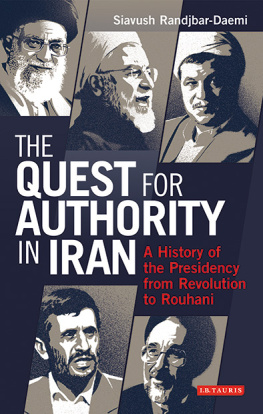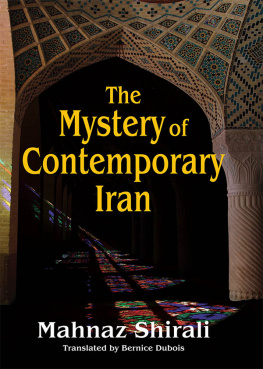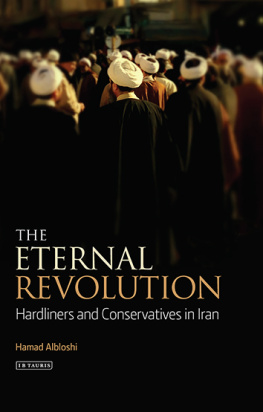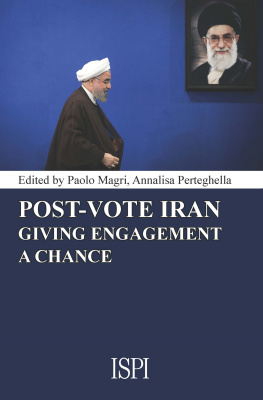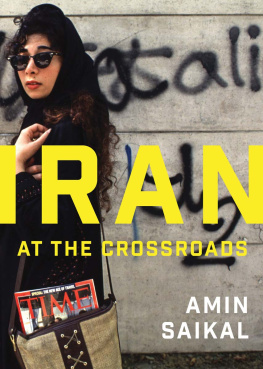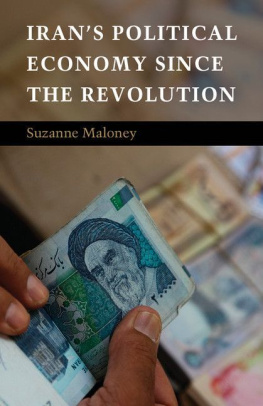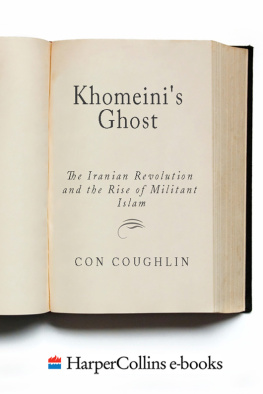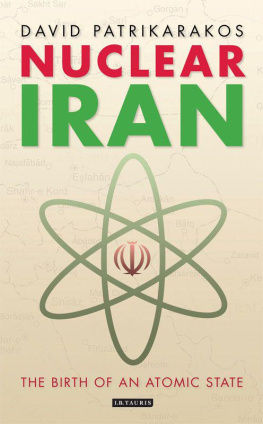Siavush Randjbar-Daemi is Lecturer in Modern Middle Eastern History at the University of St Andrews. He was previously Lecturer in Iranian History at the University of Manchester. He holds a PhD from Royal Holloway, University of London. His research interests include the development and evolution of the state and the history of the press in modern and contemporary Iran, as well as protest movements in the modern Middle East. His writings on Iranian history, culture and current affairs have been published in English, Italian and Persian.
Siavush Randjbar-Daemi has an obvious mastery of both the sources and the detail [he is] among the brightest of the emerging scholars working on modern Iranian history.
Ali Ansari, Professor of Modern History, University of St Andrews
Siavush's work is outstanding His approach is also highly original, so it will be a significant new addition to the literature on the subject I would highly recommend his book to anyone with an interest in the politics of Iran, including journalists, foreign affairs experts of many kinds, academics, students and many English-speaking Iranians. It will especially appeal in view of the presidential elections and the current divisions within the Islamist elite.
Vanessa Martin, Professor of Middle Eastern History, Royal Holloway, University of London
[This book] succeeds in bringing out the ways in which the distinctive office of the presidency in Iran operates in a maze of institutions that are themselves shot through with personal ties and relationships very well written and a pleasure to read.
Charles Tripp, Professor of Politics, School of Oriental and African Studies (SOAS), University of London
Highly recommended this book is thoroughly researched, especially with primary sources, well written, and highly focused on an important topic in contemporary Iran the role of the presidency. It is the first book which covers the full three decades from 1979 to 2010.
Ervand Abrahamian, Distinguished Professor Emeritus of Middle East History, City University of New York (CUNY)
THE QUEST FOR
AUTHORITY
IN IRAN
A History of the Presidency from
Revolution to Rouhani
SIAVUSH RANDJBAR-DAEMI
Published in 2018 by
I.B.Tauris & Co. Ltd
London New York
www.ibtauris.com
Copyright 2018 Siavush Randjbar-Daemi
The right of Siavush Randjbar-Daemi to be identified as the author of this work has been asserted by the author in accordance with the Copyright, Designs and Patents Act 1988.
All rights reserved. Except for brief quotations in a review, this book, or any part thereof, may not be reproduced, stored in or introduced into a retrieval system, or transmitted, in any form or by any means, electronic, mechanical, photocopying, recording or otherwise, without the prior written permission of the publisher.
References to websites were correct at the time of writing.
International Library of Iranian Studies 71
ISBN: 978 1 78076 526 6
eISBN: 978 1 78672 267 6
ePDF: 978 1 78673 267 5
A full CIP record for this book is available from the British Library
A full CIP record is available from the Library of Congress
Library of Congress Catalog Card Number: available
To Baba, Mamani and Parisa, for all their help and devotion
Acknowledgements
The initial idea for this book came about in 2006, when I was contemplating entering the field of Iranian Studies during my role as a freelance Iran correspondent for two Italian national newspapers, Il Messaggero and Europa. This role enabled me to report on two presidential elections, 2005 and 2009, from close range. As I was frequently called upon by the editors to provide analysis and coverage on the then incumbent Mahmoud Ahmadinejad's seemingly boundless challenges to the established world order, it became clear that a focused study of the post of the presidency would be a fruitful endeavor.
Following the start of my master's studies at SOAS, University of London in 2006, and a brief overview of the existing academic literature on the subject, I sought guidance on the best way to convert such ideas to a PhD project. Charles Tripp, who has since remained a source of wit and guidance, kindly recommended Vanessa Martin. Since our first encounter in the spring of 2007, she has acted as an indomitable, enthusiastic supporter and mentor for my historical studies. As I laboured through the PhD thesis which would form the bedrock of the present book, she applied criticism, praise and rigour in equal measure, allowing me to gain both the methodological and empirical toolkits necessary to discern salient fact from diversion in Iranian history. I will be forever indebted to her perseverance and support and to her defining contribution: imbuing me with the mindset and practical abilities required to engage in rigorous, scientific historical analysis of Iran's often exasperating and challenging modern historical record.
The Department of History at Royal Holloway, University of London, provided an ideal setting for the doctoral thesis to be developed. It provided me with a College Research Studentship in 2007 which enabled me to start the project on time. The Arts and Humanities Research Council (AHRC) assigned to me a Block Grant Partnership, award number AH/H029869/1. Professors Francesca Chiarelli and Adam Tickell ensured that a bureaucratic impediment would not prevent the assignment of the grant. The British Institute for Persian Studies kindly assisted me with travel expenses for my research trips to Tehran in 2009. The Friendly Hand Fund supported the purchase and shipment of vital primary material from Iran. My two Viva examiners, Charles Tripp and Ali Ansari, also provided valuable feedback on the thesis document. Ali has remained a constant fount of inspiration, creativity, mentorship and support in the years since, having significantly shaped my understanding of the complex political system and nation we both study with pleasure, pain and stamina.
My understanding of Iranian history has been also significantly informed by interaction with other friends and colleagues. Nasser Mohajer deserves special mention. An unassuming figure who has investigated areas of Iranian history which are far outside the academic mainstream, he has remained a constant source of critical analysis, a learned individual to whom one could always rely and confide in times of quandary or doubt. I have been deeply honoured to have been guided by him throughout the past decade in realms both relevant and distant from the ones of the present book. In short, he is a true ostad. Another close friend and talented scholar, Eskandar Sadeghi-Boroujerdi, shared with me anguishes, hopes and many valuable intellectual discussions. He has always tolerated my impatience and has been essential in honing some of the more intricate parts of the narrative of this book.
Within the small community of Iranian Studies scholars in the UK, mention of a mentor such as Homa Katouzian is necessary. A fatherly, kind figure from whom most of my peers have benefitted from, Homa has positively affected my view towards the ebbs and flows of contemporary Iranian political history and has shaped my patterns of inquiry. Nima Mina, a ceaseless patron of Iranian Studies at SOAS, provided his own unique and valuable approaches for the study of the subject at hand. He also kindly arranged several public lectures in which some of the ideas of this book were floated, and received useful feedback.

